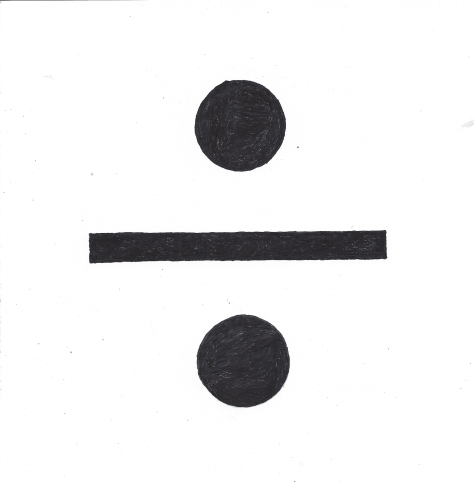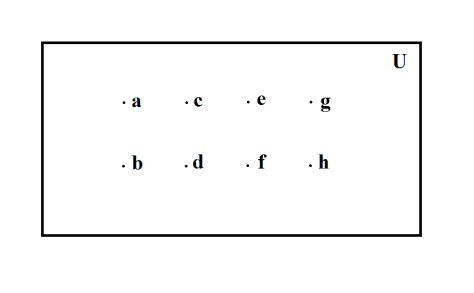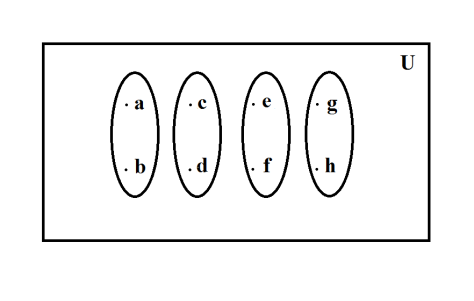(Click the below link for a Microsoft Word version of this blog-post)
one_way_of_conceptualising_division
(Click the below link for a pdf version of this blog-post)
one_way_of_conceptualising_division

Figure 1: The Division Operator.
Introduction:
What follows is a discussion of Partitive Division.
Body:
We want an implicit understanding of the operation of Division.
Let us take the equation:
8 ÷ 4 = 2
and let us examine what is happening, conceptually, when this operation is being worked out. Let us imagine our dividend:
8
as a Universal Set containing 8 elements:

Figure 2: A Universal Set containing the Dividend number of elements. A Universal Set containing 8 elements. The set {a,b,c,d,e,f,g,h} .
Let us say that we wished to divide these elements, evenly, amongst a divisor number of sets. The divisor is:
4
in this instance. So we wish to distribute 8 elements, evenly, amongst 4 sets:

Figure 3: We have distributed a dividend number of elements, evenly, amongst a divisor number of sets. The number of elements in each set is the quotient. We have distributed 8 elements, evenly, amongst 4 sets. 2, the number of elements in each set, is the quotient.
If we distribute 8 elements, evenly, amongst 4 sets, then we obtain 2 elements in each set. 2 is the result of Division. If we were doing “sums” in primary school, then 2 would be “the answer.”
We have taken 1 big set containing 8 elements:
{a,b,c,d,e,f,g,h}
and we have dispersed these elements evenly amongst 4 sets:
{a,b} {c,d} {e,f} {g,h}
The number of elements in each of these 4 sets, i.e.:
2
is the quotient.

One thought on “One Way of Conceptualising Division:”